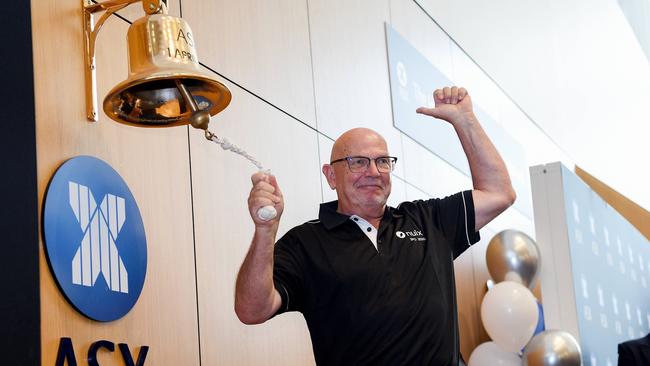‘Unfair advantage:’ Why an IPO drought is hitting the ASX
Smaller listed ASX businesses are getting hammered as the flow of money largely favours blue chip stocks.
Business
Don't miss out on the headlines from Business. Followed categories will be added to My News.
Companies hoping that the markets will improve so they can list their businesses on the Australian Securities Exchange may simply be focusing on the wrong type of investors.
The ASX IPO market has been pretty much in snooze mode this year, with only 20 companies going public so far.
While markets have blamed higher interest rates and inflation for a lack of businesses looking to list, new research from InvestorHub shows it’s not a lack of funds in the market that is killing the IPO market.
Instead, it is the ASX 200 (or the largest 200 businesses on the market) attracts about 90 per cent of daily volume traded, meaning that of that $400bn traded on-market, ASX200 companies enjoy a whopping $360bn lion’s share.
This means the other nearly 2000 listed businesses are only getting access to a fraction of the money the larger businesses are getting.

InvestorHub co-founder Ben Williamson the IPO problem was these businesses were being challenged by the “new norm” of large inflows to the larger ASX 200 due to industry money and the rising popularity of exchange traded funds.
“ETFs are a massive player. There is now a large, natural buyer in the market, with ETF inflows increasing dramatically over time which just creates an automatic buyer of stocks,” Mr Williamson said.
Separate research from HLB Mann Judd shows just how deep the problem currently is for the IPO market.
Last year was lacklustre showing for IPOs with the total funds raised from ASX listings was $847m. This was the first time markets did not raise $1bn since 2012.
Fast forward 12-months and the story has not improved.
While much of the focus has been on the successful IPO of Guzman y Gomez on June 20, it has actually hidden how the market has been going overall.
“The market remains at an interesting juncture, and uncertainty persists regarding the point when the market will see a sustained recovery in volumes and funds raised,” HLB Mann Judd partner Marcus Ohm said when the research was released in July 2024.
“While the float of Guzman y Gomez in June was fully subscribed and enjoyed first day and period end gains, there are not yet any significant volumes in the near-term pipeline, with only four upcoming listings registered with the ASX, three of which are materials companies.”

As new businesses listing continue to struggle for funds, Mr Williamson said these newly floated companies need to do a better job of selling their story if they want to gain the same inflows that blue chips stocks are getting access to.
“It is the company’s job to make investors think they should invest in the business.”
He said while business performance would ultimately drive share price value if communicated correctly and to the right shareholders.
“Half of all buying [of a stock] is from existing shareholders, while 75 per cent is from existing or prior shareholders. So companies have a list of the majority of buyers but don’t do anything with it.”
He said listed businesses look at their largest 20 owners of a business, but it is the next 10 per cent that are the large traders of the stock.
“Retail investors have no mandate, they invest in companies that they have high conviction in,” Mr Williamson said.
“Companies that invest in their retail base give themselves the ability to directly influence a sizeable portion of market demand – it’s a huge advantage that has gone unacknowledged in the coverage around this topic so far.”
While the large caps are priced higher due to this unfair market, smaller companies in certain instances are being unfairly undervalued by the market.
InvestorHub’s research suggests this overreliance on the ASX isn’t doing much to help investors, either.
A data sample of more than 360,000 shareholders across about 80 companies discovered only 28 per cent of Aussie shareholders in these individual positions were in profit.
Originally published as ‘Unfair advantage:’ Why an IPO drought is hitting the ASX


